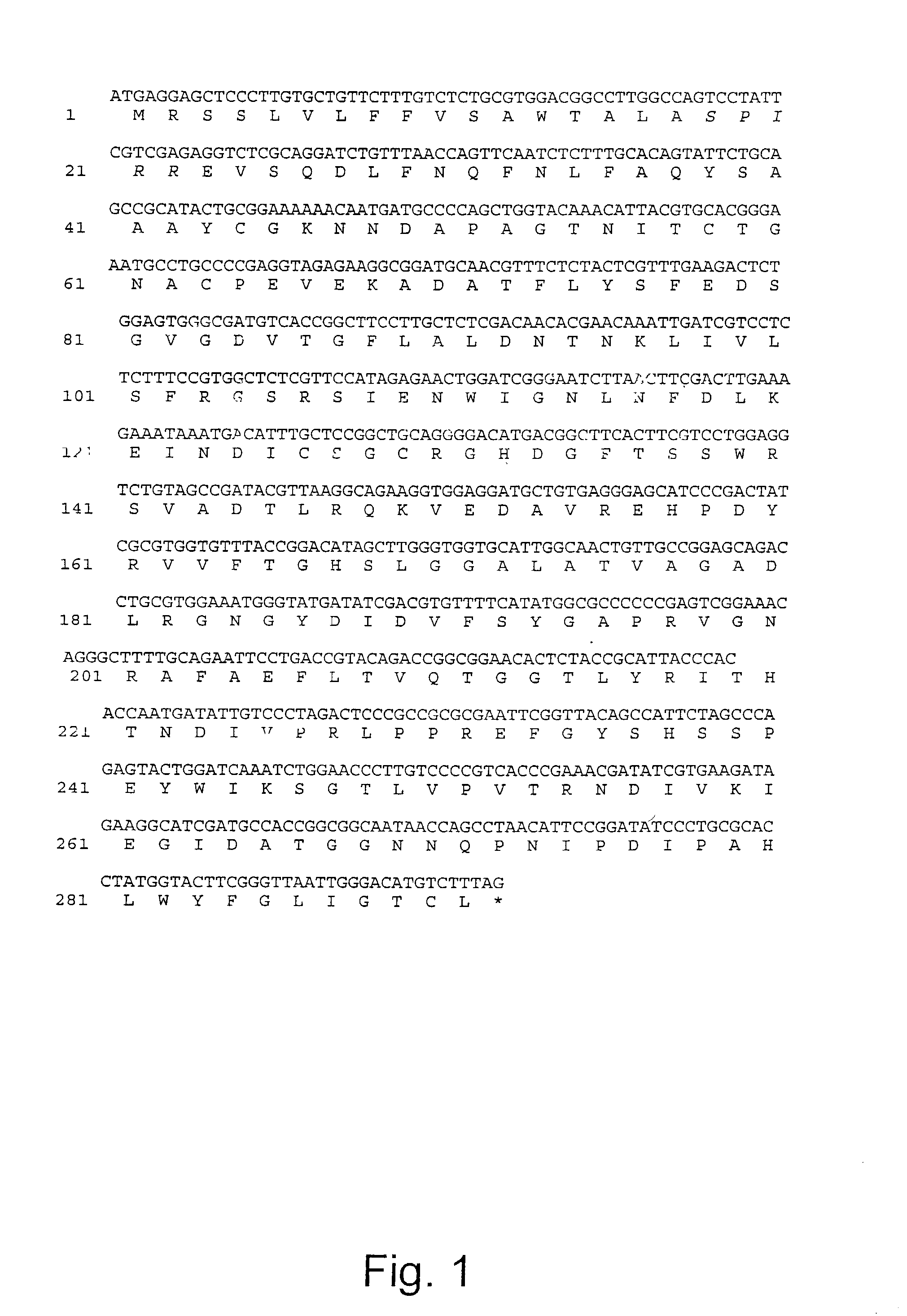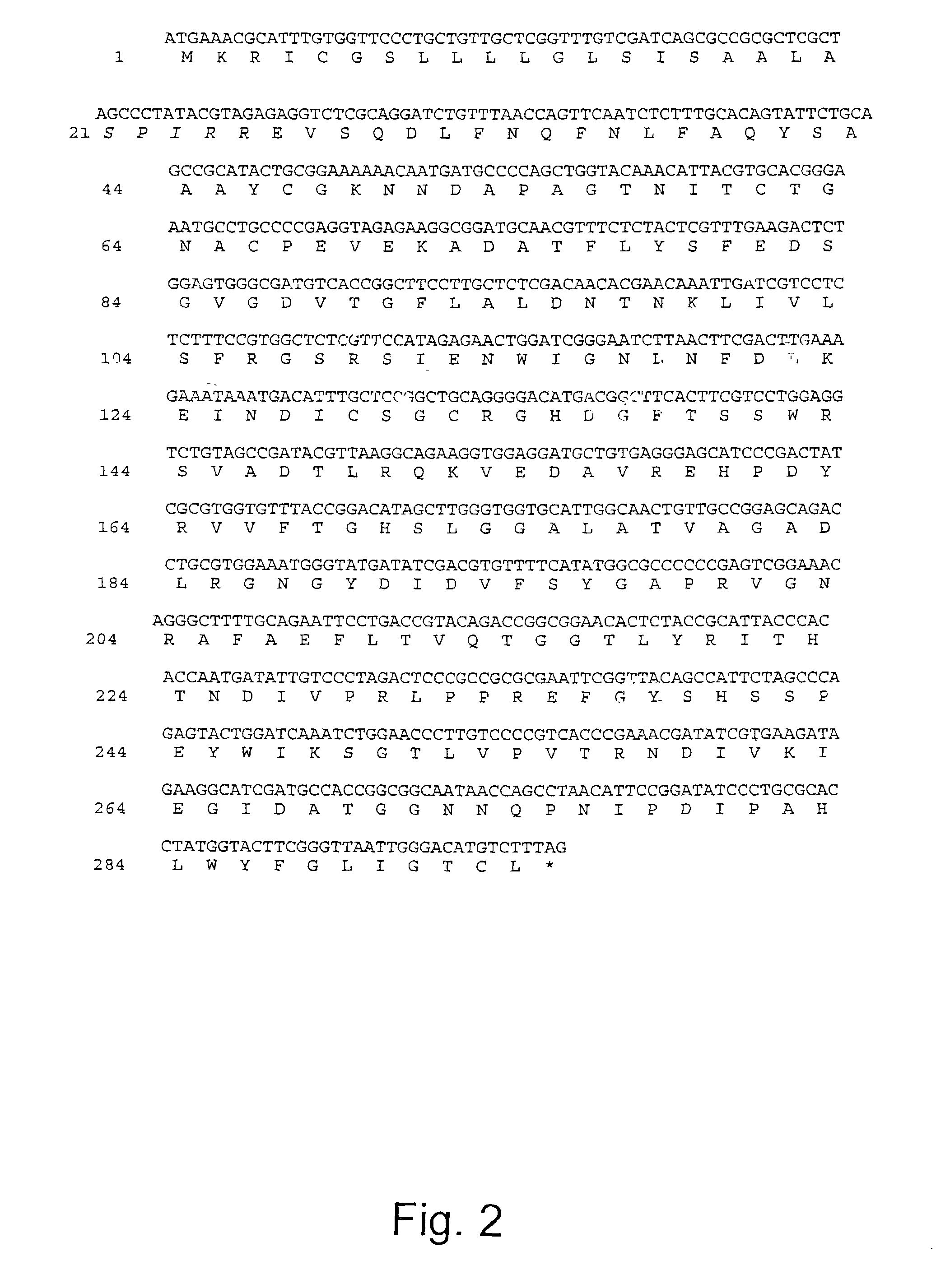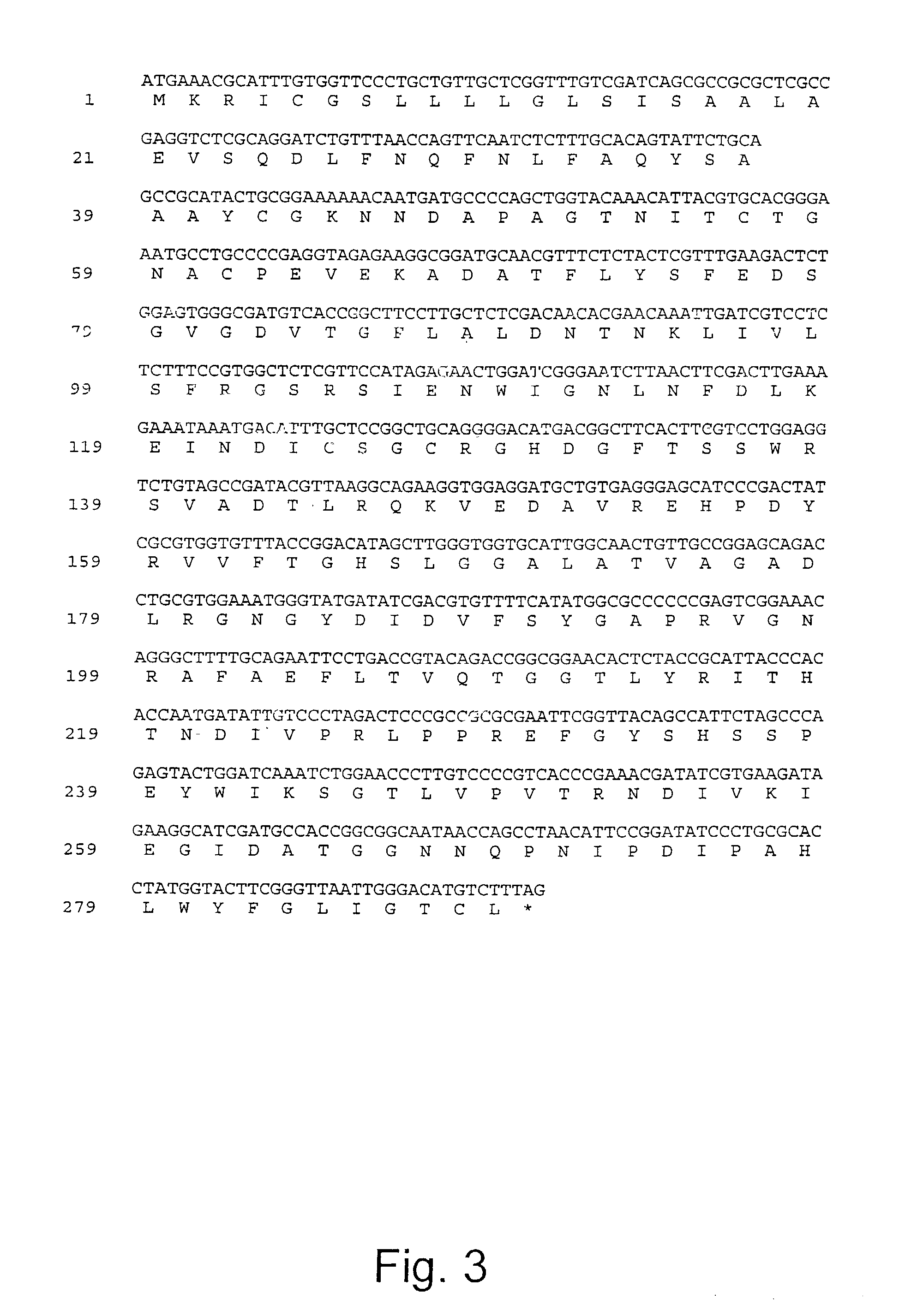Lipolytic enzymes
a technology of lipolysis and enzymes, which is applied in the field of modified enzymes, can solve the problems of not being able to remove substantial amounts of fatty stain by any of these enzymes, and achieve the effect of improving the washing performance of such enzymes and improving the properties of enzymes with lipolysis activity
- Summary
- Abstract
- Description
- Claims
- Application Information
AI Technical Summary
Benefits of technology
Problems solved by technology
Method used
Image
Examples
example 1
Production of Wildtype Humicola lanuginosa Lipase in Yeast
[0747]For expression Humicola lanuginosa lipase in the yeast Saccharomyces cerevisiae YNG318 the yeast expression vector pJSO37 (see FIG. 8) was constructed as described in the Material and Methods section above. pJSO37 comprises the DNA sequence encoding the parent lipase and includes the DNA sequences encoding the signal peptide and propeptide (see FIG. 1). The plasmid was transformed into the yeast by standard methods (cf. Sambrooks et al., (1989), Molecular Cloning: A Laboratory Manual, 2nd Ed., Cold Spring Harbor). The yeast was cultivated as described in the Material and Methods section above.
[0748]Purification of H. lanuginosa lipase expressed in S. cerevisiae was performed as described in the Materials and Methods section above with the exception that the pH of the lipase containing pool was adjusted to pH 7.6 (instead of pH 8.5) and the elution of lipolytic enzyme was conducted at pH 7.25. The lipase containing pool ...
example 2
Removal of the SPIRR-peptide from the N-Terminus of the H. lanuginosa Lipase Expressed in S. cerevisiae
[0754]To 4.5 mg of the above purified modified (“SPIRR”-containing) lipase expressed in S. cerevisiae (in 1.8 ml 0.05 M NH4HCO3) was added 50 μg bovine trypsin (sequencing grade) and the mixture was incubated for 1 hour at 37° C. Upon incubation the tryptic digest was stopped by adding more than 50 mg soy bean trypsin inhibitor.
[0755]The removal of the N-terminal SPIRR-peptide addition was observed by N-terminal amino acid sequencing where the fraction containing SPIRR was reduced from 75% to 13% (See Table E2).
[0756]
TABLE E2Fraction containing SPIRR-FractionTreatmentEVSQ . . .containing EVSQ . . .Untreated (i.e.75%25%modified lipase)Trypsin treatment13%87%
[0757]The mild trypsin treatment did not result in internal cleavages in the modified lipase as no internal amino acid sequences were observed by amino acid sequencing. Also the specific activity of the trypsin treated lipase wa...
example 3
Construction of Parent Humicola lanuginosa Lipase Expression Vector and Expression in E. coli
[0759]pSX92 (see FIG. 4) was cut with Hind III, blunt ended with Klenow polymerase and then cut with ClaI. The large fragment was isolated (A). pHLL (see EP 305,216 FIGS. 3 and 4) (comprising the DNA sequence encoding the parent lipase) was cut with BamH1, blunt ended, and cut with XhoII. The fragment containing the mature part of the modified lipase gene was isolated (B).
[0760]A and B were ligated together with a synthetic linker (KFN 575 / 576) which codes for the last 5 amino acids in the subtilisin 309 signal fused to the first four amino acids of the mature lipase. The last nucleotide “A” in the upper strand changed the XholI site in the mature lipase gene to a Bgl II site. Synthetic linker:
[0761]
KFN 575 / 576:5′-CGATCGCATCGGCTGCTGAGGTCTCGCAA-3′(SEQ ID NO:124)3-TAGCGTAGCCGACGACTCCAGAGGCTTCTAG-5′(SEQ ID NO:125)
[0762]The resulting plasmid (pSX167) comprised the DNA sequence encoding the matu...
PUM
| Property | Measurement | Unit |
|---|---|---|
| Temperature | aaaaa | aaaaa |
| Length | aaaaa | aaaaa |
| Fraction | aaaaa | aaaaa |
Abstract
Description
Claims
Application Information
 Login to View More
Login to View More - R&D
- Intellectual Property
- Life Sciences
- Materials
- Tech Scout
- Unparalleled Data Quality
- Higher Quality Content
- 60% Fewer Hallucinations
Browse by: Latest US Patents, China's latest patents, Technical Efficacy Thesaurus, Application Domain, Technology Topic, Popular Technical Reports.
© 2025 PatSnap. All rights reserved.Legal|Privacy policy|Modern Slavery Act Transparency Statement|Sitemap|About US| Contact US: help@patsnap.com



